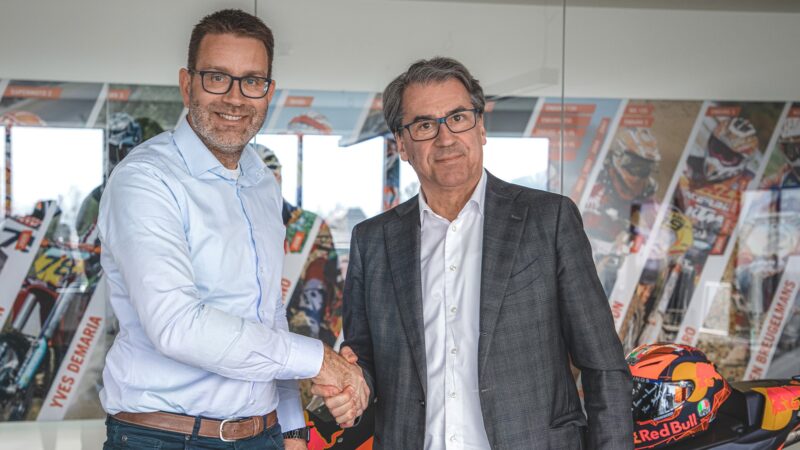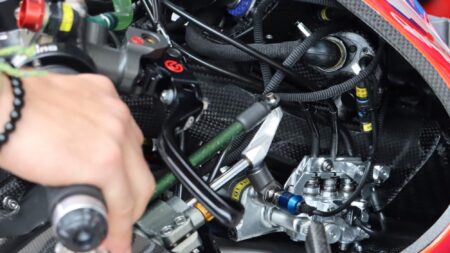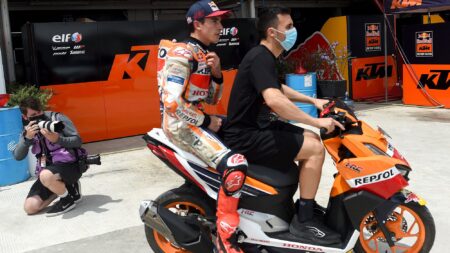The controversy over front and rear shapeshifters – complex mechanical ride-height devices used by riders during races to increase performance – brought matters to a head.
Earlier this year Dorna asked the MSMA to fix this situation, either by banning front shapeshifters from 2023 or by banning both front and rear shapeshifters from 2024. (Holeshot devices are not part of this debate.)
Despite numerous meetings the MSMA failed to reach a conclusion, because its rules demand unanimous decisions on all technical regulations. Aprilia, Honda. KTM, Suzuki and Yamaha all wanted front shapeshifters banned, but Ducati didn’t…
So Dorna simply sidestepped the MSMA, because it’s concerned about increasing costs and performance, with MotoGP bikes already surpassing 225mph/362km/h at some tracks.
During the season-opening Qatar GP the Grand Prix Commission – the body which oversees MotoGP’s rule-making process – met to discuss the situation and effectively ignored the MSMA’s veto on the technical rules.
How is this possible? Because Dorna insists that it currently has no contract with the MSMA that gives the manufacturers control of the technical rules.
Obviously, Dorna’s loss of patience with the MSMA has massive implications for the future of MotoGP’s technical rulemaking.
For example, if Dorna believes that MotoGP aerodynamic development is getting out of hand then it can impose its own restrictions on winglets, aerofoils and so on. This will inevitably bring Dorna into conflict with one or more of the manufacturers – Ducati, without a doubt – so of course it will have to tread a careful path, trying not to wholly alienate any of the manufacturers that make the machines that fill the grid.

The MSMA’s general secretary Biense Bierma (left) meets current MSMA chairman and KTM CEO Stefan Pierer
KTM
Undoubtedly Ducati Corse general manager Gigi Dall’Igna will be quietly seething at the front shapeshifter ban. Will he immediately abandon the system, operated by a Formula 1-inspired accumulator unit? Or will he continue development, working harder than ever to use the technology to win the 2022 MotoGP title? Stupid questions, to be honest.
However, while Dall’Igna is renowned for finding loopholes in MotoGP’s technical regulations, he now knows that Dorna has decided that taking control of its championship is more important than giving the manufacturers free rein on technology.
This will surely be one of the main topics of conversations as the MSMA’s newly appointed general secretary Biense Bierma commences a tour of all six MSMA manufacturers, starting a few days ago with KTM, whose CEO Stefan Pierer is the MSMA’s current chairman.
What might Dorna look at next? Downforce aerodynamics, almost certainly.
Many riders now agree that MotoGP’s latest aerodynamic designs create so-called dirty air behind the motorcycles, which prevents following riders getting close enough to make a pass. If overtaking becomes problematic, as it has been in F1 for years, then Dorna will surely move to fix that, because good racing depends on overtaking.




